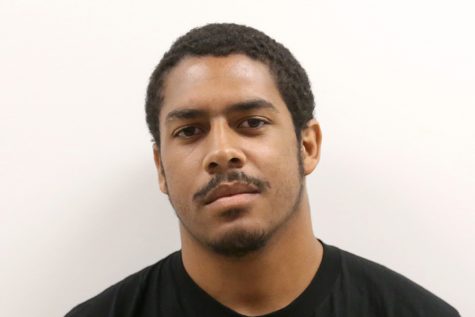ASU awaits possible 40k budget
Student council prepares finances for fall activities, events
Oct 17, 2018
As students register for classes and prepare an educational plan, they may notice an additional $5 fee to the overall cost of enrollment.
The waivable fee is paid by students in the Contra Costa Community College District when they register for classes in fall and spring semesters.
The money goes to fund student activities at the specific college they attend and are managed through the Associated Student Union’s operational budget.
According to Treasurer Dagim Tessema, the ASU is expected to receive nearly $40,000 this year from funds allocated by the Student Activity Fee.
With the amount of the current semester’s deposit not being finalized, the ASU has been operating at an approximate $6,000 surplus — money that was carried over from last year.
Student Life Coordinator Joel Nickelson-Shanks said several ASU sponsored events and programs have been funded with help from the Student Activity Fee. This semester, a slate of Welcome Week events and scholarships have already been sponsored.
These events haven’t had their payments finalized but have been approved by the ASU Board.
ASU Vice President Christopher Miller said all use of funds are voted on by the ASU Board.
“The money is all from the students. So it should benefit the students in events — for students by students,” Miller said.
Miller said ASU sponsored events should be fun, but also have some additional value to students in the form of information or scholarships.
For example, events like last year’s Battle of the Talents and the CCC Olympics awarded scholarships as prizes.
Providing scholarship opportunities is a greater focus for ASU because they feel collectively, they have the opportunity to boost scholarship access to students.
They also offer support to undocumented students who may have trouble applying to certain scholarships, Miller said.
Last year was a particularly heavy year for expenses from events and programs, Nickelson-Shanks said.
The ASU entered fall of 2017 with a $2,500 surplus after a student activity deposit of $33,000.
Nickelson-Shanks said the ASU went big on events last year hosting movie nights, a haunted house and supporting the Clipper Card program, all of which came at a significant expense.
The spring semester haunted house in the Knox Center managed to keep costs relatively low at $650 because the ASU worked with staff in the Knox Center to build the sets and do a majority of the work in-house.
However, larger expenses from last year were $2,340 for the Clipper Card program, $1,167 for ASU clothing and $4,376 for academic scholarships.
Other events that benefited from the Student Activity Fee funding were Suicide Prevention Week, a Latin heritage event, the “Black Panther” movie screening and Thanksgiving dinner.
An additional cost fixed into the ASU budget is the annual allotment to pay for 25 percent of Nickelson-Shanks’ salary.
The ASU Board agreed to partially pay for Nickelson-Shanks’ full-time salary in spring of 2017 through the 2018-19 college year.
Other ongoing costs are ASU Board member stipends.
Nickelson-Shanks said this year’s ASU schedule ended up being lighter on big events and more focused on broad advocacy initiatives. He noted this week’s series of events for the Undocumented Student Week of Action as an example.
With the compressed calendar, the ASU needed some time to adjust and accommodate to when students are best available to turn out for events.
Turnover, due to transfers within ASU’s leadership, is another adjustment point, Miller said.
Business cards, shirts and hoodies are additional costs that come out of the Student Activity Fee.
Miller said these expenses boost the ASU’s presence on campus and gives a unified, professional look. He said other parts of raising the ASU’s campus presence would be designing a presentation members can do in classes to lobby for student participation.
Approximately $2,000 is expected to be allocated for scholarships this semester, according to Nickelson-Shanks.
Miller said when deciding what to use the money for he sees it as giving back to students and not about trying to save as much money as possible.
“We should spend the money because if we withhold anything I feel like we’re doing a disservice to the students.”


